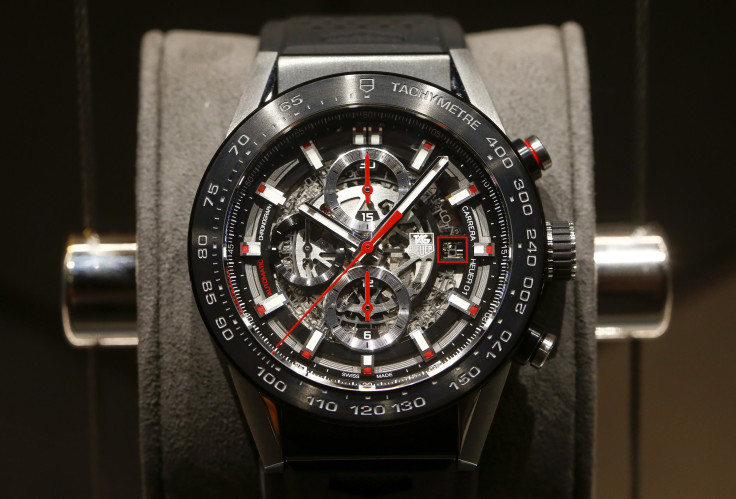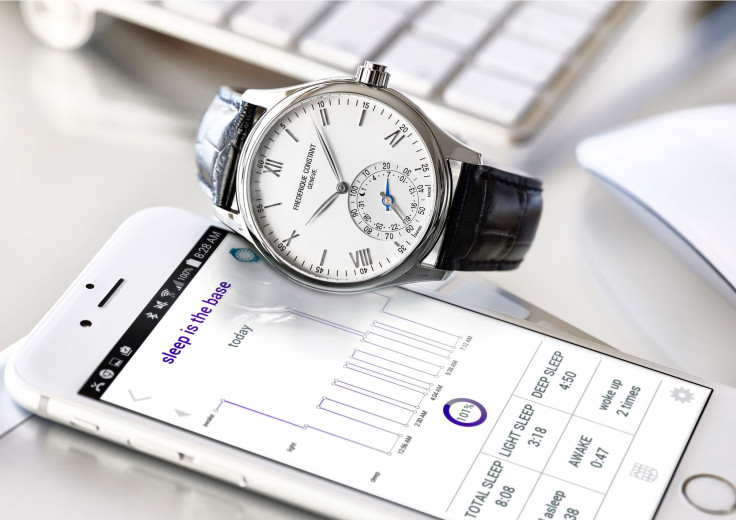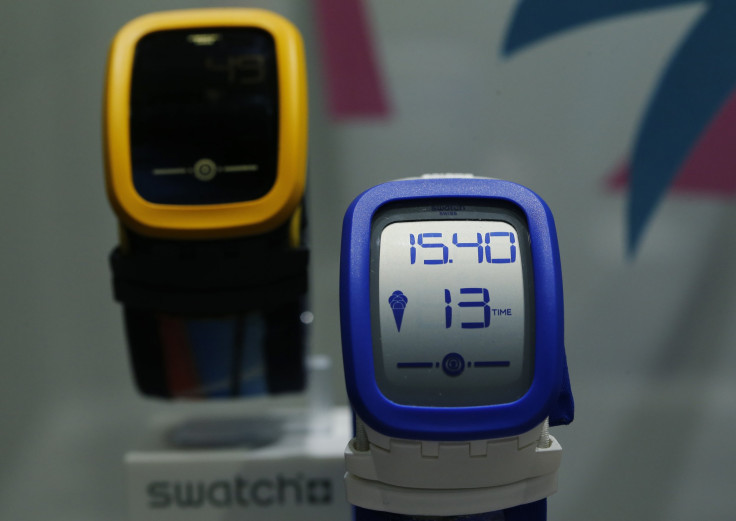Apple Watch Vs. Swiss-Made Smartwatches: 5 Classy Alternatives To Apple’s Timepiece

At Baselworld 2015, an annual exhibition in Basel, Switzerland, there are plenty of watches to see from traditional watchmakers. But, this year, some are turning their attention toward smartwatches, a market the Apple Watch is expected to spur to a significant degree when it launches in April.
Watchmakers last year played down the impact of smartwatches as mostly a gimmick that wouldn’t replace classic timepieces. “This watch has no sex appeal,” Jean-Claude Biver, CEO of Tag Heuer, said of the Apple Watch in an interview with Die Welt. “It’s too feminine and looks too much like the smartwatches already on the market.”
Since then, Tag Heuer and several other companies have changed course, looking to get a piece of a global market that is expected explode to $8.7 billion in 2015, compared with $1.3 billion in 2014, according to the research firm Smartwatch Group.
Although some watchmakers initially scoffed at the notion of smartwatches, their remarks may indicate fears that history could be about to repeat itself. The so-called Quartz Crisis of the 1970s and ’80s saw Switzerland’s mechanical-watch industry devastated by the rise of quartz watches made by Japan’s Seiko Epson Corp. and others. During that time, Swiss watchmaker employment fell to 28,000 from a high of 90,000, according to WatchTime. But the industry eventually rebounded as the watch became more of a luxury item.
Smartwatches such as the Apple Watch aren’t expected to affect the business of luxury mechanical watchmakers whose products cost $5,000-plus apiece. But for those below that price point, there could be some concerns, especially because watches priced under 3,000 Swiss francs ($3,076) accounted for 94 percent of the 28.6 million units exported from Switzerland in 2014, according to the data of Federation of the Swiss Watch Industry. However, the lower-price watches accounted for only 34 percent of the value of total Swiss watch exports last year, 21 billion Swiss francs ($21.53 billion).
“For companies that have more mass-market appeal, they’re afraid of losing out on their market share,” said Kelly Jasper, associate editor of Hodinkee, a watch-focused online magazine. “And [they’re trying] to reposition themselves to take advantage of this new opportunity.”
While it’s likely this isn’t the last of what Switzerland will have to offer in smartwatches, here is a closer look at some of the big names launching devices in 2015.
Tag Heuer

Tag Heuer announced Thursday its plans to develop its own smartwatch in partnership with the Intel Corp. and Google Inc. Intel is expected to help on the hardware side, while Google will provide software through Android Wear. Officially, Tag Heuer hasn’t said much beyond that. But the smartwatch could wind up as a digital version of its popular line of Carrera watches, according to Reuters. Prices and specific features remain under wraps, but the company expects to launch a product in the fourth quarter.
Breitling B55 Connected
Instead of ditching the analog movement of a mechanical timepiece, Breitling took a balanced approach with the B55, which it calls a connected watch. Built of black carbon-coated titanium, the watch with a diameter of 46 millimeters sports a blue rubber strap on the outside. And rather than replace the face with a touch screen, it has two backlit liquid-crystal displays that can show a number of functions and measurements. When not in use, its lithium-ion battery can be juiced up with its magnetic charger.
Unlike other watches made by Breitling, the B55 connects to a smartphone via Bluetooth, which can be used to adjust the watch’s settings and upload various measurements. While official pricing has yet to be announced, it’s expected to be somewhere in the area of $8,000.
Frederique Constant Horological Smartwatch

Also taking the traditional look coupled with smartwatch features is Frederique Constant, which unveiled its Horological Smartwatch Thursday. Sporting an analog watch face, the handmade smartwatch can also measure activity and track sleep, which can be transmitted to a companion application on either an Android or an iOS device.
Sales of the smartwatch will begin in June, with prices starting at 950 euros ($1,028) -- and 1,250 euros ($1,353) for the Rose Gold model -- according to CNet.
Swatch Touch Zero One

The Swatch Touch Zero One, unveiled ahead of Baselworld, isn’t an attempt to match the likes of Apple and Motorola with a fully featured smartwatch. Instead, it’s more of an update to its predecessor -- the Swatch Touch. While it retains all the features of its predecessor, including a curved screen and fitness tracking, it also has a number of functions for beach volleyball, such as power hits and power claps.
All that information can be downloaded to a companion smartphone app. And like many Swatch watches, it can last multiple months without a battery replacement. The company is also preparing to launch another watch in coming months with near-field-communication technology, which can be used for contactless payments and opening doors.
Gucci Smartband

The fashion house Gucci is also getting into the smartwatch market with its own smartband, currently in development with the Black Eyed Peas’ Will.i.am. Unlike most smartwatches, however, the Gucci band will be able to work independently of a smartphone. Some of its functions include taking calls, sending messages and fitness tracking, according to Vogue.
It’s another take on the Puls cuff-style smartwatch launched by Will.i.am in October. The launch date and pricing of the Gucci smartband have yet to be announced.
Baselworld began Thursday and continues through March 26.
© Copyright IBTimes 2024. All rights reserved.






















